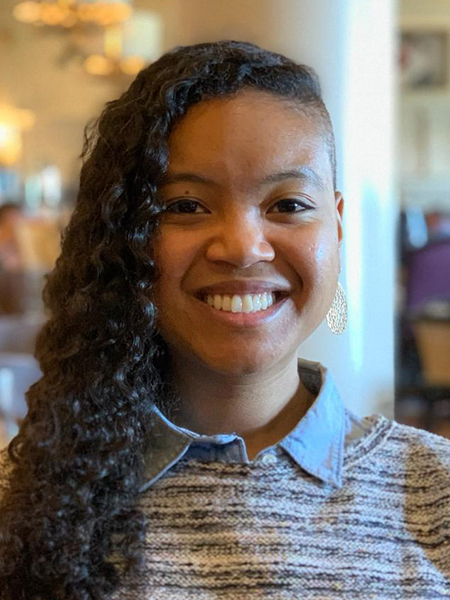Allen School professor and alum Leilani Battle (B.S., ‘11) originally wanted to be a game developer. As a kid growing up in Bremerton Washington, Battle saw a glimpse of her future every time she booted up her family’s Nintendo 64. Whether dodging shells and banana peels in Mario Kart or catching them all as a Pokemon trainer, she saw how imagination could manifest itself in new and inventive ways.
“I loved immersing myself in the worlds created by others through video games,” she said. “I saw games as a nice mix of creativity and problem solving. Computer science seemed like a sensible step towards this childhood dream.”
At the University of Washington, Battle’s interests shifted. The creative problem-solving spark remained, but instead of immersing herself in games she immersed herself in data — specifically, new and improved ways to explore the vast quantities available to scientists and analysts. Battle went on to earn her Ph.D. from MIT before returning to the Allen School to complete a postdoc in the Interactive Data Lab and UW Database Group. After spending three years as a professor at the University of Maryland, College Park, Battle returned once again to the Allen School in 2021 — this time as faculty — to co-lead the Interactive Data Lab with colleague Jeffrey Heer.
Drawing upon techniques from databases, human-computer interaction and visualization, Battle is not playing around when it comes to her current research focused on modeling user behavior to not only understand but optimize users’ ability to glean actionable insights from their data. She has earned a string of professional accolades for this work; the most recent came in October, when she received the 2023 VGTC Visualization Significant New Researcher Award from the IEEE Visualization and Graphics Technical Community for her contributions to “interactive data-intensive systems for exploratory data analysis.”
As one example of her contributions, last year Battle and collaborators at the University of Maryland examined how users incorporate languages like D3 into their implementation workflows when designing visualizations. They performed a mixed methods analysis of nearly 38,000 posts on Stack Overflow — a popular resource for D3 users — and noted that a gap exists between how creators of data visualizations conceptualize their designs versus how they reason about D3’s code structure. The authors found that the resulting disruption to their workflows discouraged more widespread adoption of these tools. Battle and her colleagues proposed multiple approaches for ameliorating these issues, including smoother integration of languages like D3 with other visualization tools, automating the process for generating example design galleries, and improving D3’s support infrastructure to enable users to more easily find and incorporate meaningful code components into their workflows.
“When visualization languages are developed and tested in a vacuum, without considering how and where people use them, they can fall short of addressing those users’ needs,” said Battle, who alongside her co-authors earned the award for Best Short Paper at last year’s IEEE Visualization and Visual Analytics Conference (VIS 2022). “By being mindful of how users interact with these tools in practice as they are developed, we can improve users’ information access and empower them to explore a broader range of effective visualization designs.”
Battle and another group of University of Maryland colleagues subsequently took a similar tack in an effort to understand how users approach sensemaking, an iterative process through which they refine their visualizations to deepen understanding of their data. This time, they applied their mixed methods analysis to more than 2,500 Jupyter notebooks — a popular tool for documenting the sensemaking making process in data science — on Github to understand how the sensemaking pipeline evolves over time in order to better support a variety of sensemaking activities, such as annotation, branching analysis and documentation. The team earned a Best Paper Honorable Mention at the Association for Computing Machinery’s Conference on Human Factors in Computing Systems (CHI 2023) this past spring for their work.
More recently, Battle took a deep dive into historical whaling data as part of Computing for the Environment, a cross-campus initiative aimed at applying interdisciplinary research in computing, engineering and environmental sciences to address challenges ranging from climate change to wildlife conservation. She and Allen School Ph.D. student Ameya Patil teamed up with Trevor Branch, a professor in the UW School of Aquatic & Fishery Sciences, and Zoe Rand, a Ph.D. student in the UW’s Quantitative Ecology and Resource Management (QERM) program, to develop WhaleVis, an interactive dashboard that enables scientists to explore roughly a century’s worth of historical data maintained by the International Whaling Commission to inform current whale conservation efforts — without consuming an onerous amount of computing resources.
“Scientific data is a really important aspect of big data, but scientists all over the world have access to completely different hardware and software. Maybe they can’t use big servers to process huge data sets quickly,” Battle explained to UW News. “So when creating WhaleVis we had to ask: How do we design a tool that can visualize millions of data points, but that doesn’t rely on super beefy servers?”
Battle and her colleagues presented WhaleVis at IEEE VIS 2023 held in Melbourne, Australia this fall — the very same conference at which she collected the VGTC recognition. The award follows her selection as a Sloan Research Fellow earlier this year, after having earned the TCDE Rising Star Award and a National Science Foundation CAREER Award in 2022. Battle previously was named among MIT Technology Review’s Innovators Under 35 for her earlier work on projects such as ForeCache, a system for reducing latency in large-scale data exploration by prefetching data based on user behavior.
Read the full VGTC award citation here.
Roger Van Scyoc contributed to this story.


